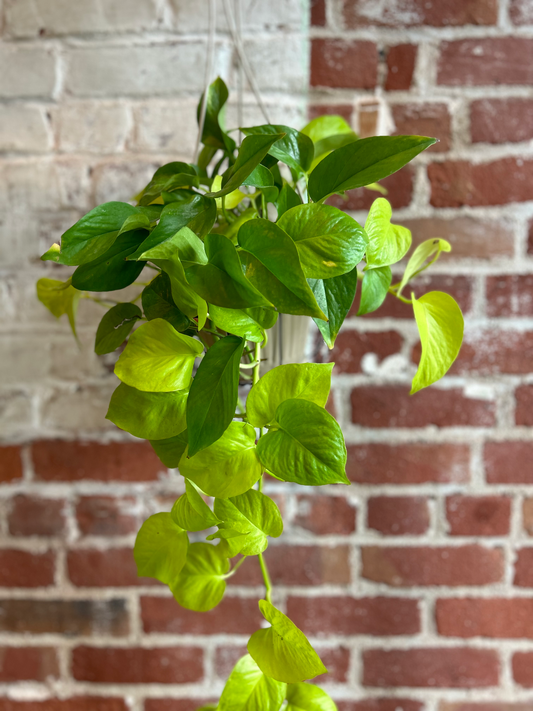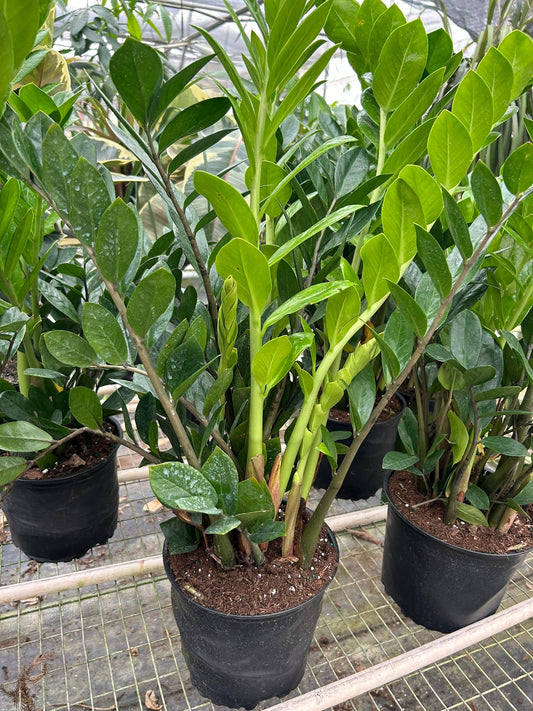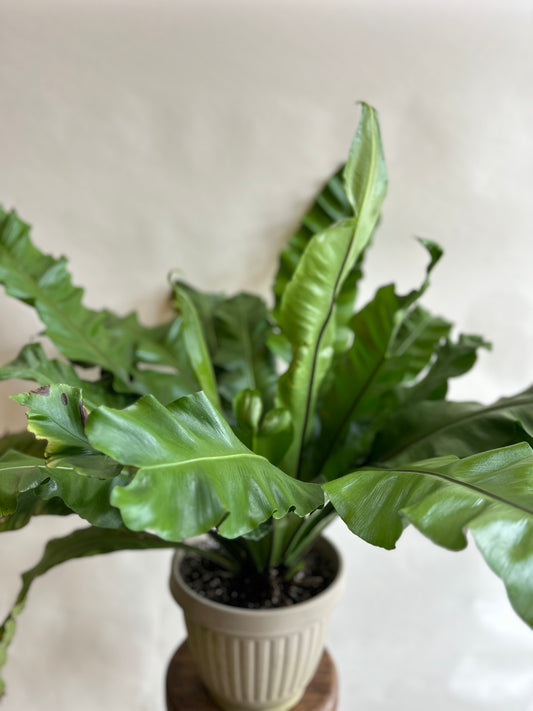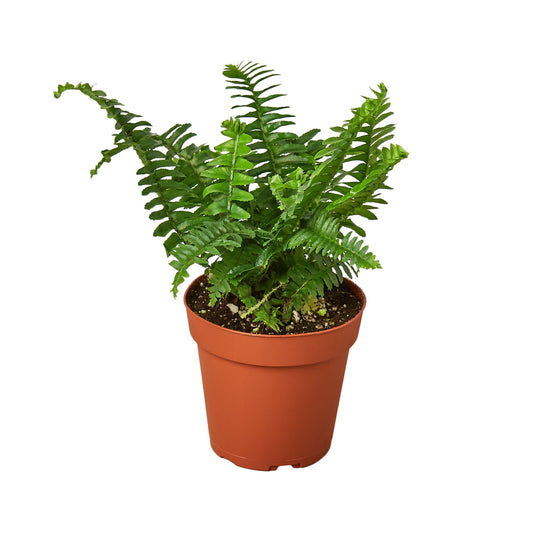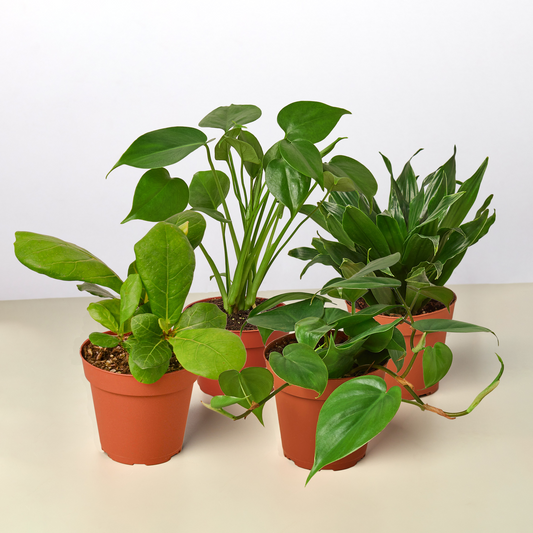How to Grow and Care for Philodendron Giganteums
Cafe Planta Team
Philodendron giganteum, with its large, glossy leaves and impressive size, has a way of making a bold statement in any room. This plant is not just about looking good; it's about bringing a slice of the tropics into your living space. If you've ever considered adding a touch of the exotic to your home, the Philodendron giganteum might just be the perfect plant to start with.
In this article, we'll explore everything you need to know to grow and care for your Philodendron giganteum. From choosing the right spot in your home to understanding its watering needs, you'll have all the tips and tricks to ensure your plant thrives. We'll also touch on dealing with pests and how to incorporate this beauty into your home's design. Let's get started!
Understanding Your Philodendron Giganteum
Before you dive into the care specifics, it's helpful to know a little about the Philodendron giganteum itself. Native to the tropical regions of South America, this plant is known for its substantial, heart-shaped leaves that can grow quite large under the right conditions. It's a type of climbing philodendron, so if given support, it can climb and spread, adding to its dramatic presence.
This plant thrives in environments that mimic its natural habitat: warm, humid, and with dappled sunlight filtering through. Understanding these basic needs will set you on the right path to providing optimal care. Unlike some of its fussier cousins, the Philodendron giganteum is relatively easy to care for, making it a popular choice among plant lovers.
Interestingly enough, while it's quite hardy, the Philodendron giganteum does have a few preferences that, if attended to, will make all the difference. For instance, it prefers indirect light rather than direct sunlight, which can scorch its leaves. And while it's tolerant of different soil types, a well-draining soil mix will keep its roots happy and healthy.
Choosing the Right Location
Finding the perfect spot for your Philodendron giganteum can be a bit like finding real estate for a mini jungle. You want a place that offers enough light but not too much, and enough space for it to grow without feeling cramped.
Start by looking for a spot with bright, indirect light. A room with a north or east-facing window can be ideal because it provides plenty of light without the harshness of direct sun rays. If your space doesn't get a lot of natural light, don't fret. This plant is adaptable and can tolerate lower light levels, though its growth might slow down a bit.
While assessing your space, consider the plant's potential size. Philodendron giganteum can grow quite large, so you'll want to ensure it has enough room to spread out. Avoid placing it in high-traffic areas where it might get bumped or brushed against frequently.
- Light: Bright, indirect light is best.
- Space: Ensure there's enough room for growth.
- Temperature: Keep it in a warm spot, ideally between 65-80°F.
Watering: Keeping It Just Right
Watering is one of the trickiest parts of plant care, and the Philodendron giganteum is no exception. Too little water, and you risk drying out the plant; too much, and you might end up with root rot. The key is to find a balance, and thankfully, this plant is pretty forgiving.
A good rule of thumb is to let the top inch of soil dry out between waterings. Stick your finger in the soil to check moisture levels; if it feels dry, it's time to water. When you do water, make sure to do it thoroughly, allowing water to drain out of the bottom of the pot, which ensures that the roots are getting a good drink without sitting in water.
Pay attention to the seasons, as well. During the growing season (spring and summer), your Philodendron giganteum will need more frequent watering. In the fall and winter, when growth slows down, you can cut back on watering a bit.
- Check soil moisture: Let the top inch dry out before watering.
- Water thoroughly: Ensure water drains out to prevent root rot.
- Adjust with seasons: More water in spring/summer, less in fall/winter.
Feeding Your Philodendron Giganteum
Just like us, plants need food to grow, and your Philodendron giganteum is no different. While it's not a heavy feeder, giving it a little boost during the growing season can help it thrive.
A balanced liquid fertilizer applied every month or so during the spring and summer should do the trick. Look for a fertilizer with equal parts nitrogen, phosphorus, and potassium, often labeled as 10-10-10 on the package. This will provide the essential nutrients your plant needs to grow those large, gorgeous leaves.
Be careful not to over-fertilize, as this can lead to a buildup of salts in the soil, which can damage the plant. If you notice white crusts on the soil surface, it might be a sign of over-fertilization. In such cases, flush the soil with water to wash out excess salts.
- Fertilizer type: Use a balanced liquid fertilizer.
- Frequency: Once a month during the growing season.
- Watch for buildup: Flush the soil if you see white crusts.
Potting and Repotting
As your Philodendron giganteum grows, there will come a time when it needs a new home. Repotting is an essential part of plant care, ensuring your plant has enough space to continue its expansion.
Generally, you'll want to consider repotting every 1-2 years or when you notice roots coming out of the drainage holes. Choose a pot that's 1-2 inches larger in diameter than the current one. This gives the roots room to grow without overwhelming the plant with too much soil, which can hold excess moisture.
When repotting, use a well-draining potting mix. A good mix might include peat, perlite, and orchid bark to provide the right balance of moisture retention and aeration. Be gentle with the roots as you transfer the plant to its new pot, and water it well afterward to help it settle in.
- Frequency: Repot every 1-2 years or when roots outgrow the pot.
- Pot size: Choose one 1-2 inches larger in diameter.
- Soil mix: Use a well-draining mix with peat, perlite, and bark.
Dealing with Pests and Problems
Like any houseplant, the Philodendron giganteum can sometimes fall prey to pests. The most common culprits are spider mites, aphids, and mealybugs. Fortunately, these pests are usually easy to manage with a little diligence.
If you notice signs of pests, such as discolored leaves or sticky residue, act quickly. A gentle solution of water and mild soap can often do the trick for minor infestations. Spray the plant thoroughly, paying special attention to the undersides of the leaves where pests like to hide.
For tougher cases, you might need to use an insecticidal soap or neem oil. These are kinder to your plant than harsher chemical pesticides and can be very effective. As always, follow the instructions on the product carefully to avoid harming your plant.
- Common pests: Look out for spider mites, aphids, and mealybugs.
- Initial treatment: Use a water and soap solution.
- Severe infestations: Consider insecticidal soap or neem oil.
Incorporating into Interior Design
Beyond its care, the Philodendron giganteum can be a stunning addition to your home's interior design. Its large, vibrant leaves can serve as a focal point in a room or add a lush touch to a collection of plants.
Consider placing your plant in a decorative pot that complements the room's color scheme. A bold, ceramic pot can highlight the plant's own dramatic nature, while a neutral pot can allow the plant to take center stage.
Because of its size, this plant works well as a standalone piece in a room, like a living room or a spacious office. Alternatively, use it to create a layered look with smaller plants, allowing it to add height and depth to your plant arrangement.
- Pot choice: Use decorative pots to complement the plant and room.
- Placement: Works well as a focal point or part of a plant collection.
- Design role: Can add height and depth to plant arrangements.
Propagating Philodendron Giganteum
Propagation is a fun and rewarding way to expand your plant collection or share your love of Philodendron giganteum with friends. The process is relatively straightforward, especially if you're familiar with propagating other types of philodendrons.
One of the easiest methods is through stem cuttings. Choose a healthy stem with at least two or three leaves and cut just below a node. Remove the lower leaves to expose the node, as this is where the roots will develop.
Place the cutting in a jar of water or in a pot with moist soil. If using water, change it every few days to keep it fresh and prevent stagnation. In soil, keep the cutting moist but not waterlogged. After a few weeks, you should see roots beginning to grow, and once they're a few inches long, you can pot the cutting in soil if it's been in water.
- Method: Use stem cuttings.
- Preparation: Choose healthy stems, cut below a node, and remove lower leaves.
- Rooting options: Use water or moist soil for root development.
Final Thoughts
Caring for a Philodendron giganteum can be a rewarding experience, bringing a touch of the tropics into your home. With the right care, this plant can thrive and become a stunning focal point in any room. From selecting the perfect spot to understanding its watering needs, you've got all the tools to ensure your plant stays healthy and happy.
At Cafe Planta, we believe that plants have the power to connect us with nature and each other. Whether you're an experienced plant parent or just starting your journey, we're here to help. If you have questions or need advice, don't hesitate to reach out via email or Instagram. Let's create beautiful, thriving plant collections together!


